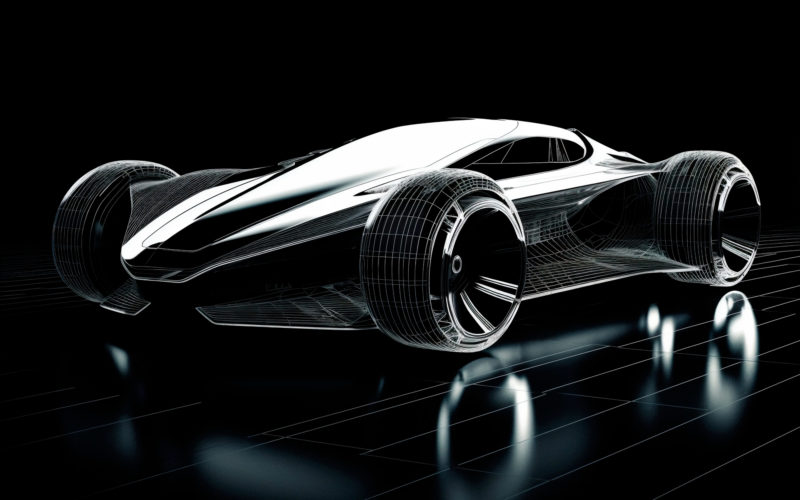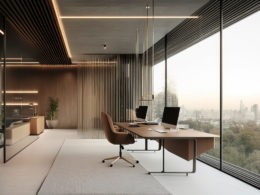One of the most coveted abilities today is the capacity to visualize and improve ideas and products before introduction to the market. A highly impactful technology in this pre-launch stage is 3D rendering. These capabilities are now accessible through the 3D product rendering services or 3D product renderings provided by 3D product visualization companies.
These services enable manufacturing companies to generate intricate, realistic depictions of their products, facilitating improved planning and decision-making. Therefore, continue reading to explore the opportunities and benefits of 3D product renderings in the pre-launch stage of product development, particularly for enhancing visualization, collaboration, and innovation.
Role of 3D Rendering in Pre-Launch Product Planning
Using 3D rendering before launching a new product can be incredibly beneficial. It allows companies to visualize the product in high detail and explore different designs, colors, and features before finalizing the physical prototype. This visualization helps identify potential design issues that might not be evident in traditional sketches or 2D images. In addition, 3D visualization can create marketing materials and generate consumer interest even before the product is physically available. This pre-launch buzz can be crucial for a successful market entry.
It provides stakeholders and potential investors with a tangible product concept, aiding decision-making and securing funding.
Thereby, 3D is a cost-effective tool for refining product design and marketing strategies, ensuring a better-aligned and more successful product launch.
Visualization of Product Design and Features
Product 3D rendering services offer a detailed and lifelike representation of a product’s design and characteristics. Unlike traditional 2D sketches or CAD drawings, 3D renders provide a comprehensive visual depiction, enabling designers to observe the interactions between various elements. This level of realism allows for enhanced customization and adjustments, ensuring that the final product meets all design specifications and aesthetic criteria.
Enhancing Collaboration and Communication
Effective teamwork is a vital requirement in product development. 3D product renderings promote collaboration among cross-functional teams by establishing a shared visual language. Hence, engineers, designers, marketers, and other stakeholders can better understand the product and engage in more informed discussions, leading to well-considered decisions.
Furthermore, 3D renders generated by a 3D product visualization services company are extremely useful in presentations, enabling stakeholders to envision the product and offer valuable feedback.
Identifying Potential Issues Early
3D product renderings aid in the early identification of potential design flaws and functional issues during the development process. As a result, designers can identify and address issues before they escalate into costly mistakes by visualizing the product in a virtual environment. This early detection improves resource efficiency and minimizes the risk of expensive rework or delays.
Opportunities Presented by 3D Product Rendering Services
Market Research and Consumer Testing
Virtual prototypes produced by a 3D product rendering company are excellent for conducting market research and testing with consumers, as they enable companies to gather feedback from potential customers to aid their understanding of user preferences and pain points. This data-centric approach ensures the final product meets market demands and increases the chances of success.
Marketing and Promotional Strategies
3D rendering helps with marketing and promotional strategies. For instance, high-quality visual content, such as images and animations, can be employed across multiple platforms to captivate potential customers. Interactive and immersive experiences, such as virtual reality (VR) or augmented reality (AR) applications, can also empower customers to explore products in a virtual environment to enhance their engagement and interest.
Innovation and Creativity in Product Development
The adaptability and flexibility of 3D product renderings promote innovation and creativity. Thus, designers can explore new ideas and concepts without the limitations of physical prototypes. This freedom expedites the development process, allowing companies to bring innovative products to market more swiftly and effectively.
Advantages of 3D Rendering Over Traditional Methods
Cost-Effectiveness
3D product renderings are cost-effective, as traditional product development often requires multiple physical prototypes, which can be expensive and time-consuming. However, 3D rendering eliminates the need for these prototypes, thereby reducing production and development costs. Moreover, virtual prototypes can be easily adjusted and tested, further reducing costs.
Time Efficiency
3D rendering also optimizes the product development schedule so companies can expedite the transition from concept to final product by enabling quicker iterations and approvals. This efficiency is especially advantageous in fast-paced industries with a critical time-to-market. By cutting down on revision time and physical prototyping, 3D product renderings help companies maintain a competitive edge.
Enhanced Accuracy and Precision
The precision and accuracy of 3D renders produced by a 3D product visualization services company outperform traditional methods. Realistic simulations and visualizations ensure the product adheres to design specifications and operates as intended. This precision minimizes errors and discrepancies and contributes to producing higher-quality products and increasing customer satisfaction.
Industry-Specific Applications and Benefits
Several businesses have effectively incorporated 3D product renderings into their pre-release product strategizing. For example, some companies use 3D rendering to create and assess new devices, ensuring they fulfill user expectations and operational needs.
3D rendering also assists in developing automobiles, from exterior aesthetics to interior ergonomics, to enhance functionality and attractiveness. Lastly, the fashion and apparel sector is also leveraging 3D rendering for envisioning clothing and accessories, enabling swift prototyping and personalization, which is vital in a rapidly growing industry.
What Are the Likely Challenges?
First, expertise and skills are necessary to implement 3D rendering. As a result, companies need to invest in training their employees, hiring professionals with the required skills, or partnering with a 3D product rendering company to make the most of this technology. To maintain a competitive advantage, it is also essential to be up-to-date with the latest software and tools.
In addition, although 3D rendering can be cost-effective in the long term, the initial investment in software and tools can be substantial. Therefore, companies must assess the cost-benefit ratio and ensure they have the necessary resources to support this technology.
Moreover, integrating 3D rendering into existing workflows and processes may pose challenges, even as integration may involve adjustments and a period of adaptation for the involved teams. To prevent these challenges, companies must ensure the new technology aligns with their current practices and improves efficiency.
3D Product Rendering Costs Overview Worldwide
The cost of 3D product rendering varies significantly around the world, influenced by factors such as the project’s complexity, the experience level of the renderer, and regional economic conditions. In the United States, prices for high-quality 3D product rendering can range from $500 to several thousand dollars per image, depending on the detail required and the prestige of the rendering firm. In Western Europe, similar standards apply, with costs generally ranging from 400 to 2,000 euros. In contrast, in countries like India or the Philippines, where the cost of living is lower and there is a competitive market for digital services, the prices can be much more affordable, often ranging from $100 to $500 per image. These lower costs can make outsourcing a favorable option for companies seeking cost efficiency without compromising quality. As a result, many businesses choose to outsource their 3D rendering needs to take advantage of these disparities in pricing, balancing cost and quality to fit their specific requirements.
In regions like Eastern Europe, including countries like Ukraine and Poland, the blend of high skill levels and lower operational costs makes this area popular for outsourcing 3D rendering projects. Prices here can vary from about $200 to $800 per rendering, offering a middle ground between the higher costs in Western countries and the lower costs in Asia. Businesses often find that these regions offer a good balance of technical expertise and cost-effectiveness.
In more developed parts of Asia, such as South Korea and China, the pricing for 3D rendering services can be quite variable, typically ranging from $300 to $1000. This variance largely depends on the specific city and the service provider’s technological advancement level.
The scope of the project also greatly affects the price. Simple projects like small consumer goods can be on the lower end of the pricing spectrum. In contrast, more complex projects, such as large machinery or intricate electronics, require more time and expertise, thus driving up the cost.
Businesses considering 3D rendering services need to evaluate their budget against the potential return on investment these renderings can bring, especially in terms of enhanced marketing appeal and the ability to catch potential design flaws before they become costly errors in production. In essence, while the upfront cost might be considerable depending on the complexity and location of the service provider, the long-term benefits of high-quality 3D renderings often justify the investment.

Conclusion
3D product rendering services provide numerous benefits and opportunities during the early stages of product development, as they improve visualization, collaboration, and innovation and streamline the product development process to make it more efficient and effective.
In addition, the possible challenges shouldn’t discourage you because the advantages of product 3D rendering services far surpass the initial investment and technical requirements. Besides, companies that adopt 3D rendering will be well-positioned to take the lead in their respective industries, delivering top-quality, innovative products that meet the needs of a rapidly evolving market.
Aimee S. Marshall is a seasoned digital artist and design enthusiast who is passionate about creating stunning visuals. With over a decade of experience in 3D rendering and design, she has worked on projects spanning various industries, from architecture and interior design to product visualization and advertising. Aimee shares her expertise and insights through writing, mentoring, and speaking engagements, aiming to inspire others in the dynamic world of 3D rendering and design.












